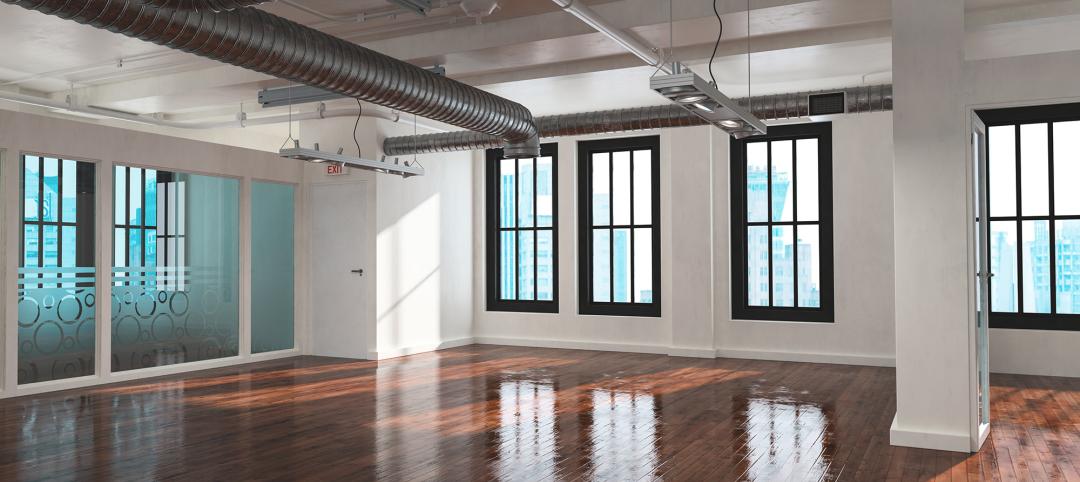A nexus of growing demand for charter schools and a pandemic-driven increase in commercial vacancies is presenting adaptive reuse opportunities to developers and AEC firms.
Charter schools are the fastest-growing sector of U.S. education, with California, Florida, and Texas leading the pack. One in five students in Arizona is enrolled in a charter school.
There are more than 3.3 million students enrolled in 7,500-plus charter schools in 44 states, the District of Columbia, Puerto Rico, and Guam, with a waiting list of nearly 2 million more, according to the National Alliance for Public Schools, a leading nonprofit dedicated to the advancement of the public charter school movement.
Finding real estate “has always been a challenge” for charter school owner-operators, says Mark Medema, Managing Director of the Alliance’s Charter School Facility Center. In response, more charter schools are finding homes in repurposed commercial spaces that, in many cases, were vacated by tenants during the coronavirus pandemic that led companies, cities, and states to impose occupancy restrictions.
So in San Antonio, a charter school now fills an empty grocery store; in Austin, a vacant Costco has been repurposed; in New York, two floors of a public housing complex in Harlem now serve as a charter school.
Medema says that empty retail space is presenting the greatest opportunity, as charter schools typically need 30,000 to 50,000 sf of space, and sometimes much more. He notes that in the Dallas market, a charter school took over the lease of a shopping mall’s anchor store that closed.
A TURNKEY REPOSITIONING APPROACH
The Alliance has also been watching how the real estate consulting firm Transwestern has been helping its clients in urban centers return to their offices. The Alliance and Transwestern have joined forces to devise a turnkey solution that leverages high vacancy rates in certain markets and product types to address the need for more educational space.
Casey Noel, Transwestern’s Vice President-nonprofit advisory services, says old warehouses in urban markets are being transformed into charter schools. “The conversion costs are relatively low, and the zoning can be conducive,” says Noel. He adds that certain municipalities offer developers community facility density bonuses, which fit how charter school repositionings often build out. “Owners and developers are looking for ‘buildabilty,’ ” he says.
Transwestern starts this process as a consultant, interacting with charter school boards and finding suitable real estate. Its knowledge of city and state policies, as they pertain to charter schools and real estate conversions, is invaluable, says Noel. Transwestern’s involvement ends when a school signs a lease.
AN ‘IDEAL’ TENANT
Noel says that it takes at least 18 months to convert a warehouse into a charter school, although the conversion period for any space depends on size, location, and the condition and adaptability of the property.
Medema thinks that developers should be jumping at the chance to reposition vacant commercial space as a charter school. “Charters are ideal tenants because they produce a steady revenue stream, are government funded, have stable enrollments, and are almost recession proof.”
The Alliance’s objective is to foster the option of a charter school education to every family that wants it for their children. Medema doesn’t envision charter schools ever surpassing public school, but he does see their market share—currently at around 6.5% of all public-school students—hitting or even exceeding 10% eventually.
Related Stories
Affordable Housing | Dec 14, 2023
What's next for affordable housing in 2024?
As 2023 draws to a close, GBBN’s Mary Jo Minerich and Amanda Markovic, AIA sat down to talk about the future. What’s next in terms of trends, technology, and construction of affordable housing?
MFPRO+ News | Nov 21, 2023
Underused strip malls offer great potential for conversions to residential use
Replacing moribund strip malls with multifamily housing could make a notable dent in the housing shortage and revitalize under-used properties across the country, according to a report from housing nonprofit Enterprise Community Partners.
Office Buildings | Nov 10, 2023
3 important early considerations for office-to-residential conversions
Scott Campagna, PE, Senior Director of Housing, IMEG Corp, shares insights from experts on office-to-residential conversion issues that may be mitigated when dealt with early.
Adaptive Reuse | Nov 1, 2023
Biden Administration reveals plan to spur more office-to-residential conversions
The Biden Administration recently announced plans to encourage more office buildings to be converted to residential use. The plan includes using federal money to lend to developers for conversion projects and selling government property that is suitable for conversions.
Government Buildings | Oct 23, 2023
Former munitions plant reimagined as net-zero federal workplace
The General Services Administration (GSA) has embraced adaptive reuse with Building 48, an exciting workplace project that sets new precedents for how the federal government will approach sustainable design.
Esports Arenas | Oct 10, 2023
Modular esports arena attracts more than gamers
As the esports market continues to grow to unprecedented numbers, more facilities are being developed by universities and real estate firms each year.
Luxury Residential | Oct 2, 2023
Chicago's Belden-Stratford luxury apartments gets centennial facelift
The Belden-Stratford has reopened its doors following a renovation that blends the 100-year-old building’s original architecture with modern residences.
Office Buildings | Sep 28, 2023
Structural engineering solutions for office-to-residential conversion
IMEG's Edwin Dean, Joe Gulden, and Doug Sweeney, share seven key focuses for structural engineers when planning office-to-residential conversions.
Adaptive Reuse | Sep 19, 2023
Transforming shopping malls into 21st century neighborhoods
As we reimagine the antiquated shopping mall, Marc Asnis, AICP, Associate, Perkins&Will, details four first steps to consider.
Adaptive Reuse | Sep 15, 2023
Salt Lake City’s Frank E. Moss U.S. Courthouse will transform into a modern workplace for federal agencies
In downtown Salt Lake City, the Frank E. Moss U.S. Courthouse is being transformed into a modern workplace for about a dozen federal agencies. By providing offices for agencies previously housed elsewhere, the adaptive reuse project is expected to realize an annual savings for the federal government of up to $6 million in lease costs.

















